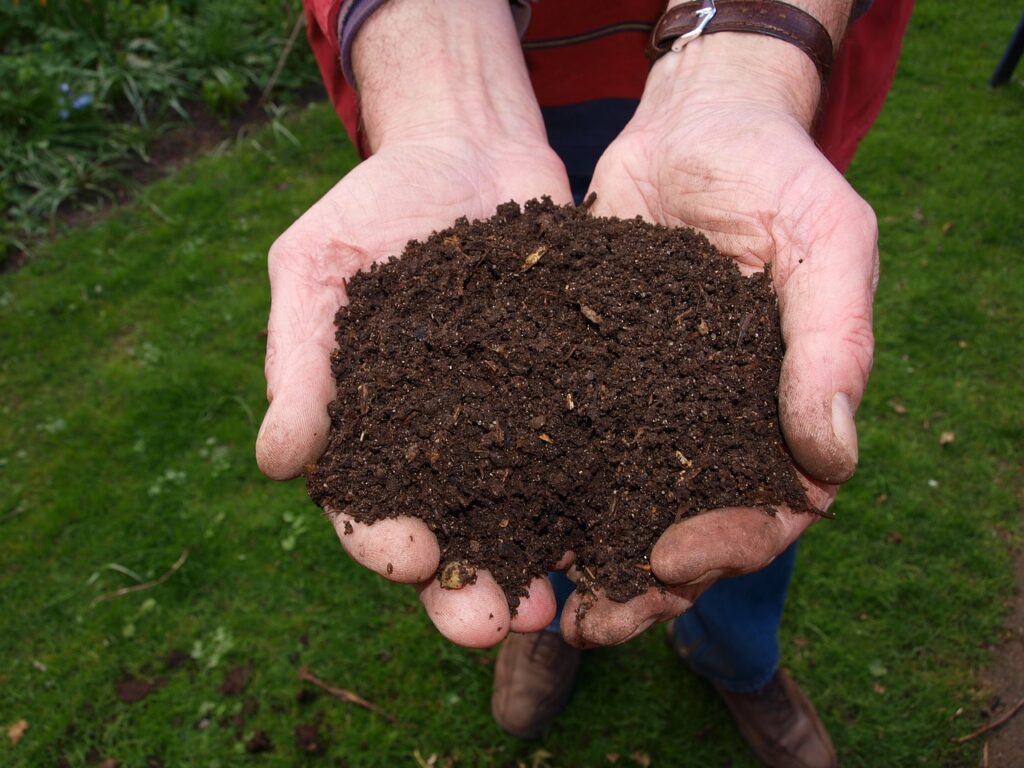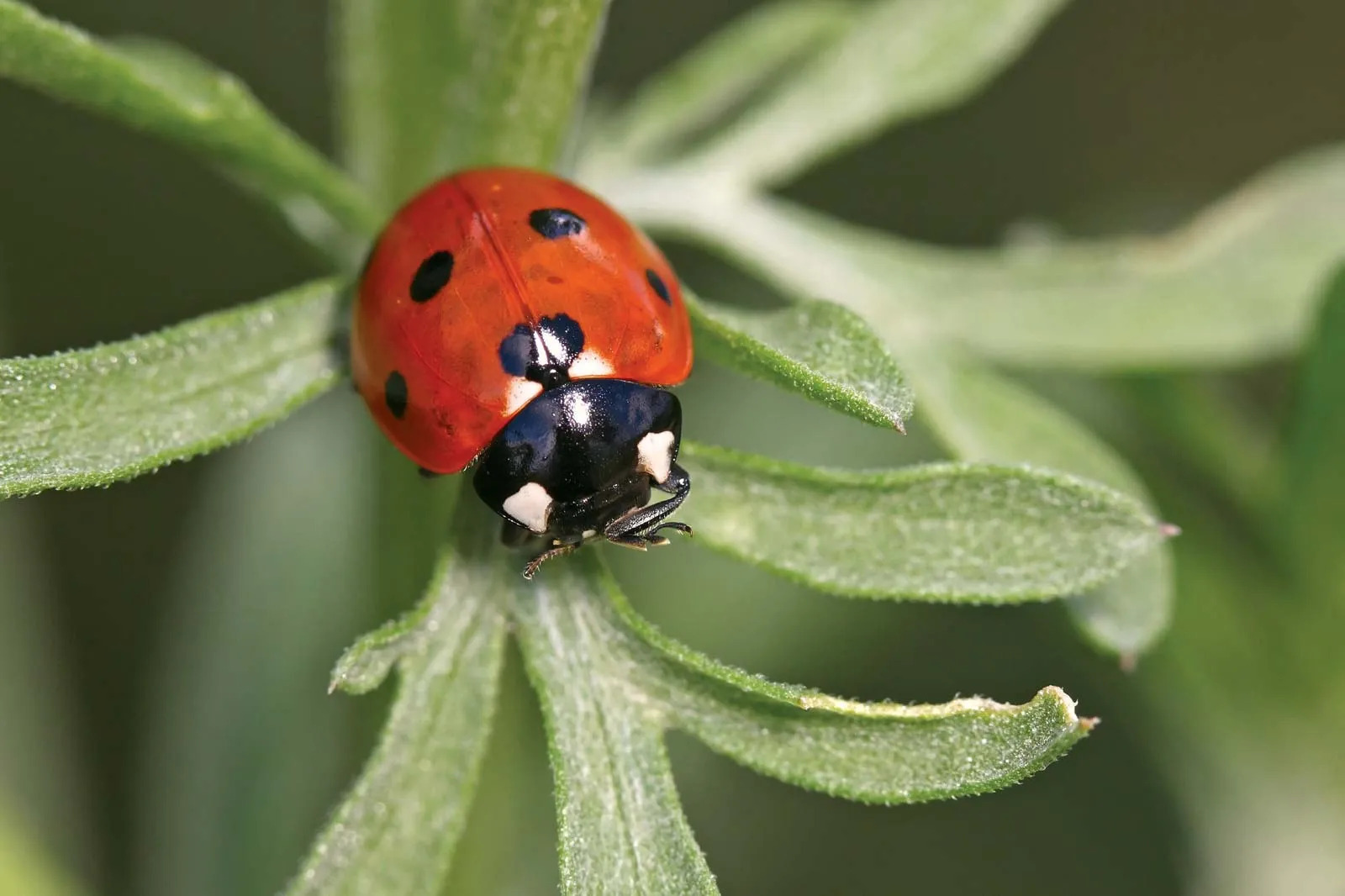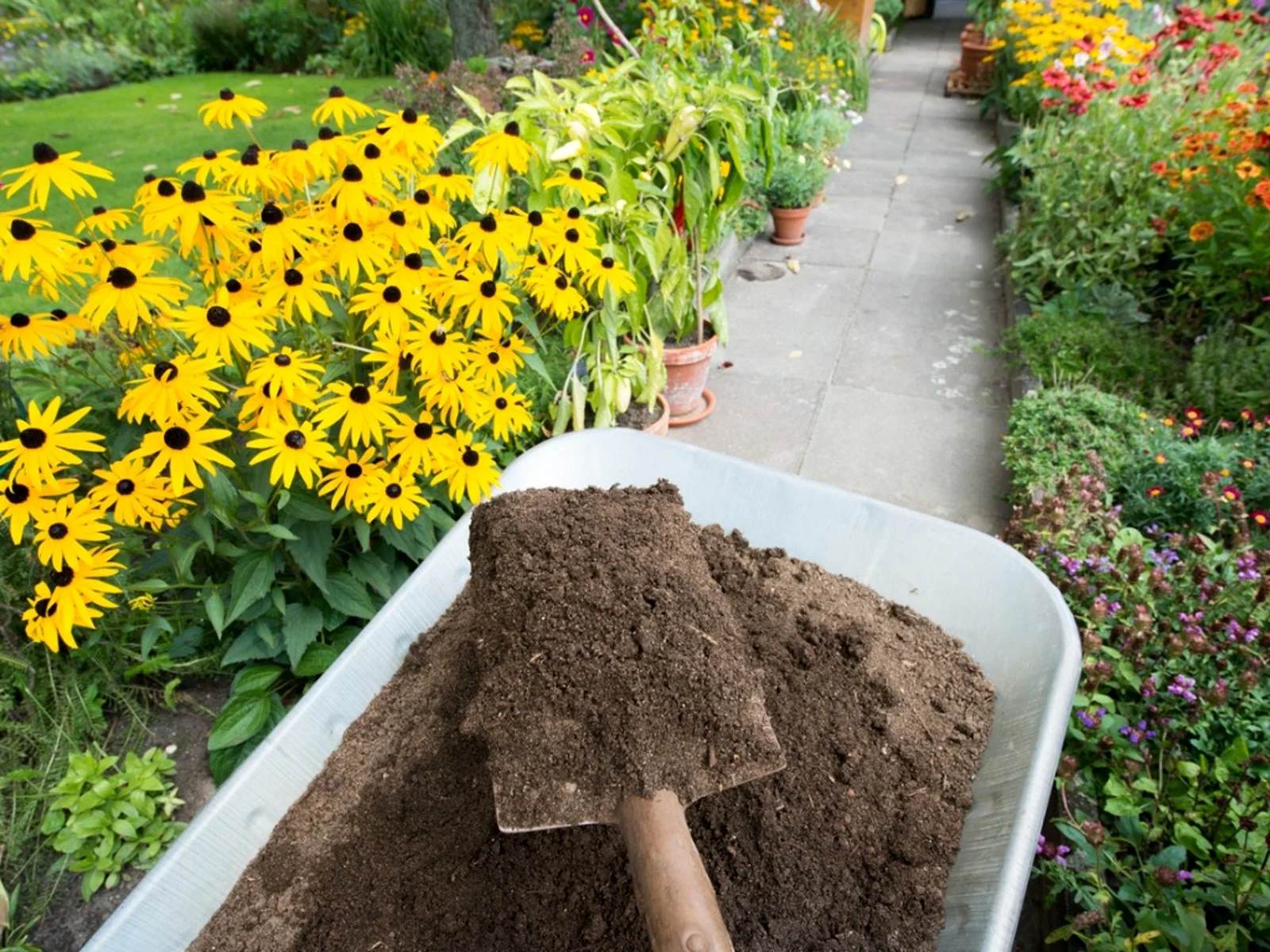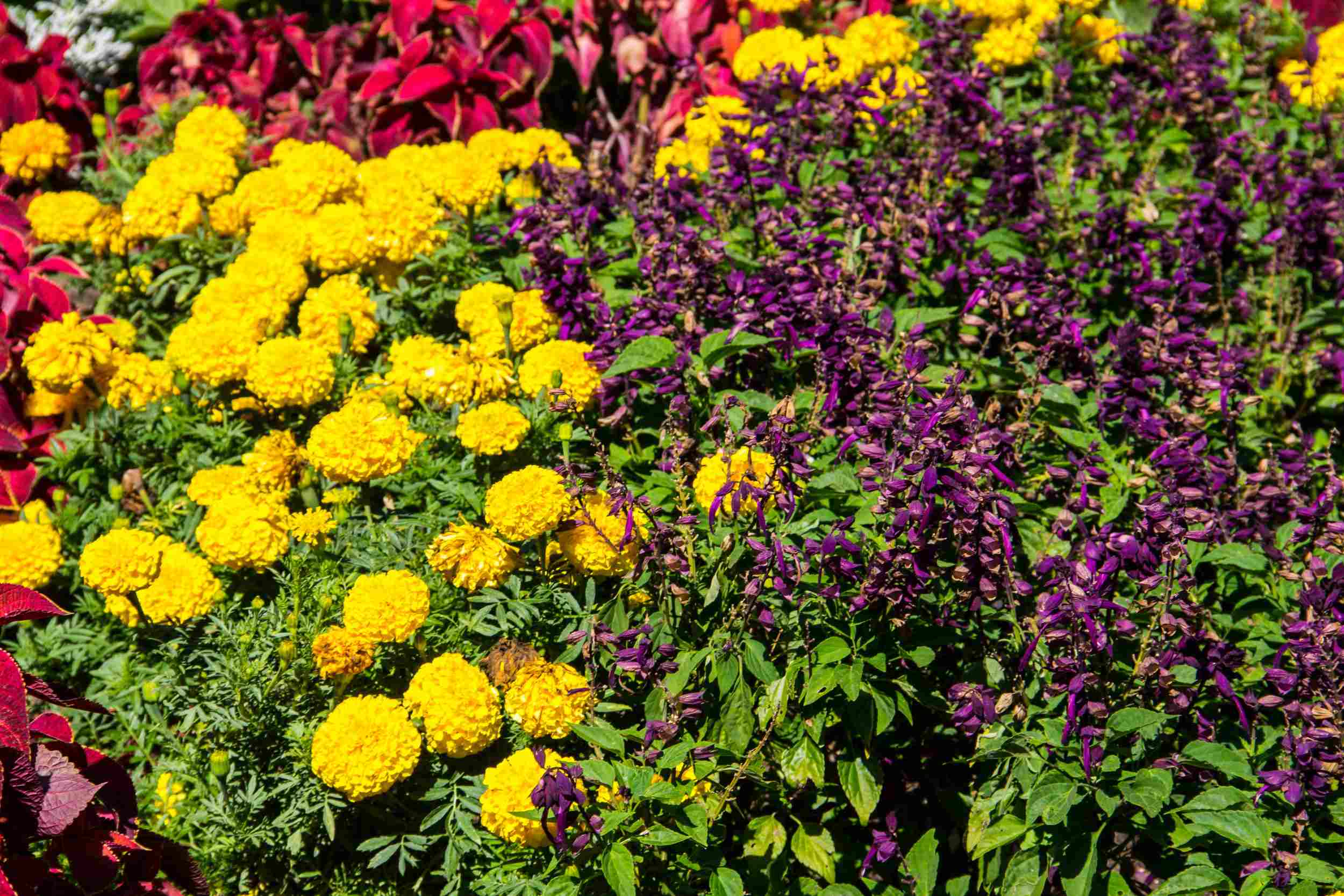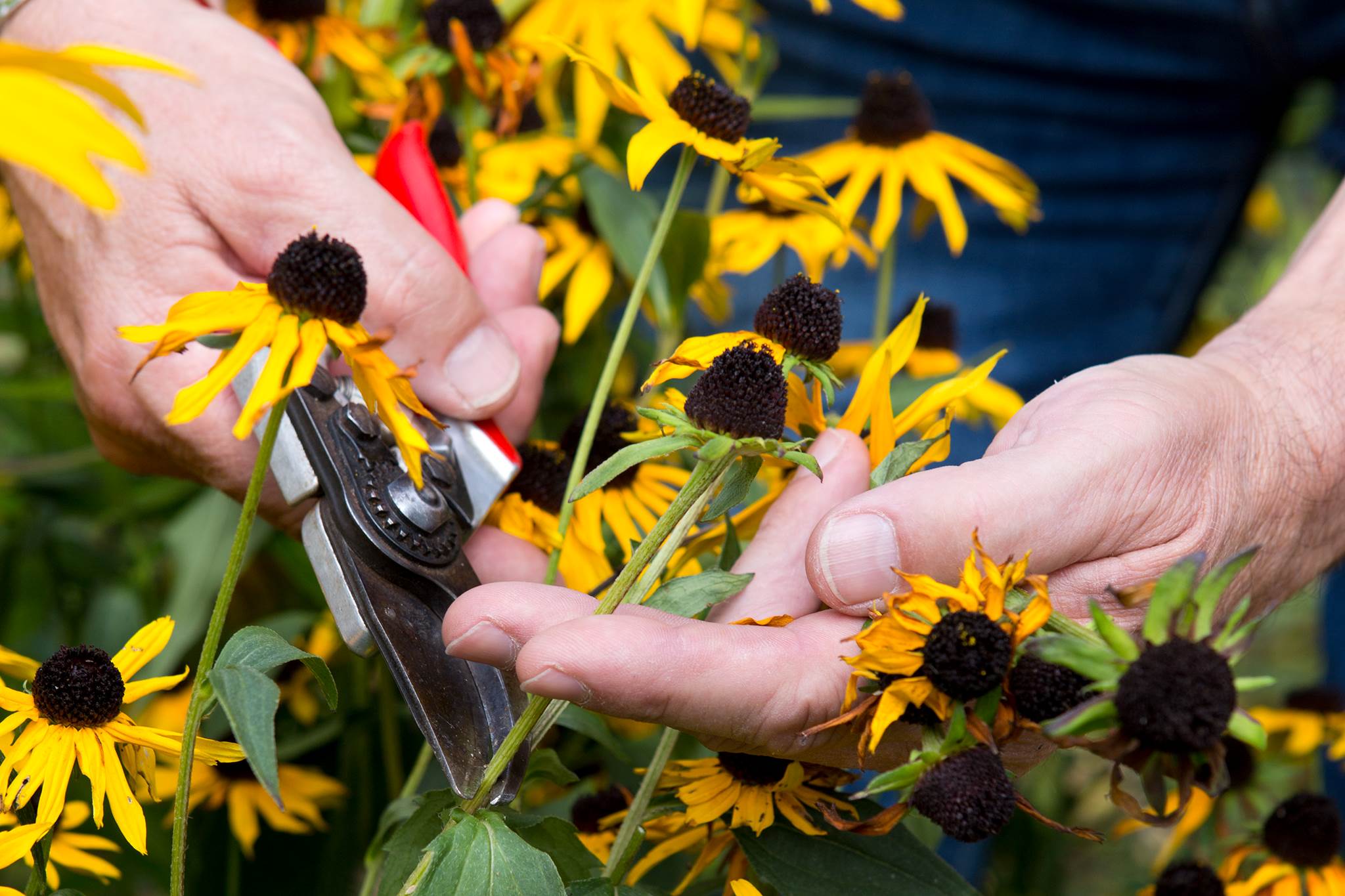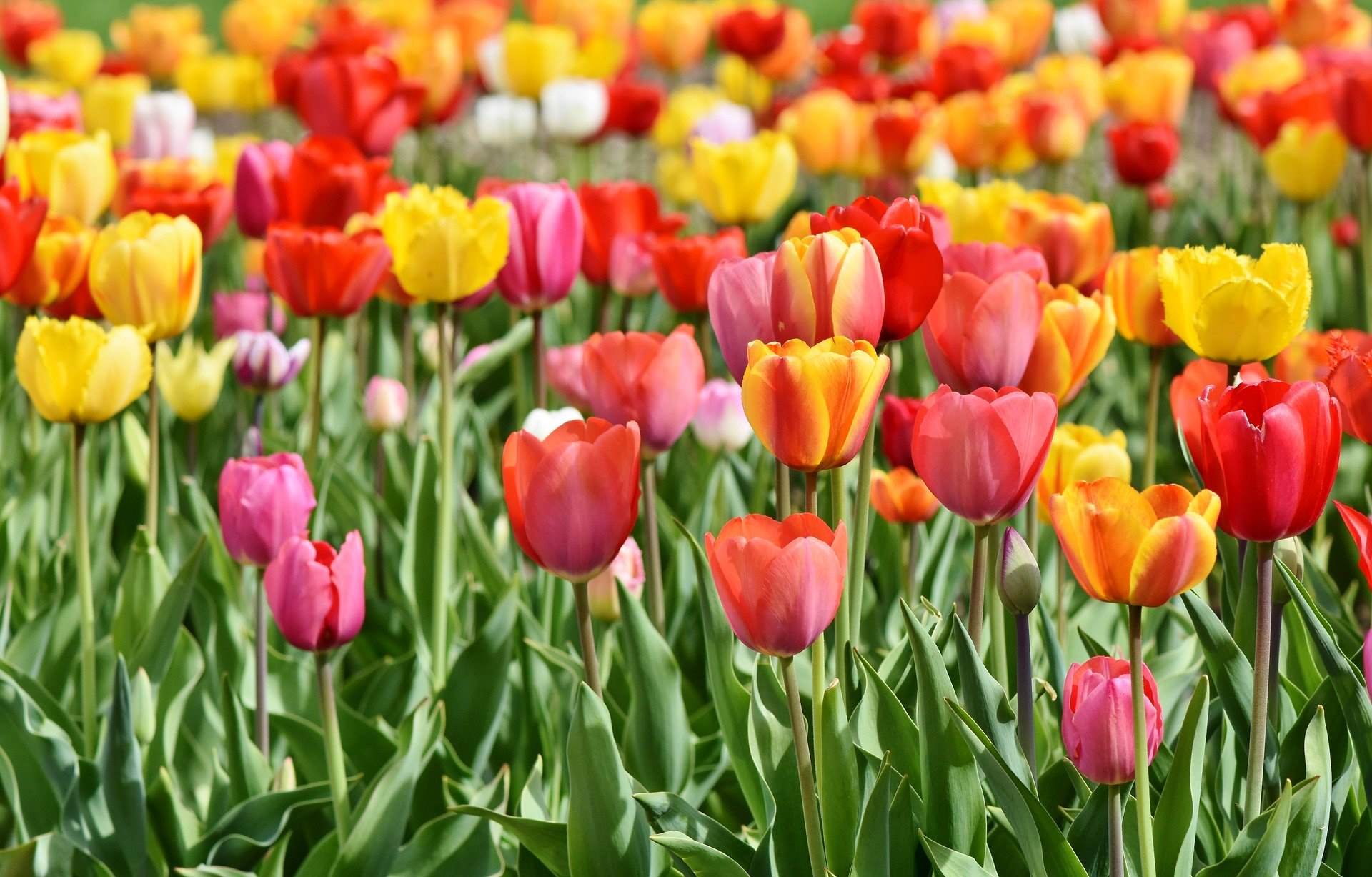Home>Gardening Techniques>Seasonal Gardening>Which Perennials Bloom All Summer


Seasonal Gardening
Which Perennials Bloom All Summer
Modified: January 22, 2024
Discover the best perennial flowers that will keep your garden blooming all summer long. Get expert tips for seasonal gardening and enjoy a vibrant and colorful landscape.
(Many of the links in this article redirect to a specific reviewed product. Your purchase of these products through affiliate links helps to generate commission for Chicagolandgardening.com, at no extra cost. Learn more)
Table of Contents
Introduction
Welcome to the exciting world of seasonal gardening! If you’re a gardening enthusiast, you know that one of the most rewarding experiences is witnessing your garden come alive with vibrant blooms throughout the summer months. Perennials that bloom all summer long are the backbone of any thriving garden, providing continuous beauty and color from early summer to the first frost.
When planning your garden, it’s important to choose the right perennials that will keep your landscape looking fresh and lively throughout the entire season. In this article, we will explore the factors to consider when selecting perennials that bloom all summer, as well as provide a list of the best perennials that will keep your garden blooming with joy.
Creating a garden that blooms all summer is not just about the beauty and aesthetics, but it also offers practical advantages. Perennials are plants that live for more than two years, meaning that they will come back year after year with minimal effort on your part. By choosing perennials that bloom all summer, you’ll have a garden that requires less maintenance and gives you more time to sit back and enjoy the beauty of nature.
Additionally, having perennials that bloom all summer can attract beneficial insects like bees and butterflies, which play a crucial role in pollination. These insects help fertilize plants and promote a healthy ecosystem in your garden. So, not only will you have a visually stunning garden, but you’ll also be supporting the local ecosystem and contributing to the preservation of these important pollinators.
Before we dive into the list of the best perennials for summer blooms, let’s take a look at the factors you should consider when selecting these plants for your garden. By understanding these factors, you’ll be able to make the right choices and create a garden that bursts with color and life all summer long.
Factors to Consider for Perennials that Bloom All Summer
When choosing perennials that will bloom all summer in your garden, there are several factors to consider. These factors will help ensure that your garden is filled with continuous blooms and requires minimal maintenance. Let’s explore these factors below:
- Light Requirements: Different perennials have varying light requirements, such as full sun, partial shade, or full shade. It is important to choose plants that are suitable for the specific lighting conditions in your garden. If you have a sunny garden, opt for perennials that thrive in full sun, while shady areas will require perennials that prefer partial or full shade.
- Soil Conditions: The quality and composition of your soil can greatly impact the health and blooming of your perennials. It’s essential to understand the pH level, drainage, and nutrient content of your soil. Some perennials may prefer well-drained soil, while others may thrive in more moist conditions. Conduct a soil test or consult a gardening expert to determine the best perennials for your specific soil conditions.
- Watering Needs: Consider the watering needs of your perennials. Some plants may require regular watering to keep their blooms thriving, while others have lower water requirements. It’s important to choose perennials that align with your watering schedule and the climate in your region. Native plants are often a great choice as they are adapted to the local climate and require less water.
- Mature Size: Understanding the mature size of each perennial is crucial for proper placement in your garden. Some perennials may grow tall and dense, while others may spread out or stay compact. Be mindful of the space you have available and choose plants that won’t overcrowd other neighboring plants. This will ensure that each perennial has ample room to grow and showcase its blooms.
- Complementary Colors and Blooming Times: Consider the colors and blooming times of the perennials you select. To create a visually appealing garden, choose colors that complement each other well. Additionally, aim for a mix of perennials that bloom at different times throughout the summer. This will ensure that your garden is constantly adorned with beautiful blooms, providing a dynamic and ever-changing landscape.
By considering these important factors, you can select the right perennials that will bloom all summer, making your garden a stunning display of colors and textures. With careful planning and thoughtful selection, you’ll be on your way to creating a garden oasis that you can enjoy throughout the summer season.
Best Perennials for Summer Blooms
Now that we’ve covered the factors to consider, let’s dive into some of the best perennials that will ensure a summer filled with vibrant blooms. These perennials are known for their long-lasting flowers and ability to withstand the heat of the summer season. Here are some top picks:
- Coneflowers: Coneflowers, also known as Echinacea, are a popular choice for summer blooms. These hardy perennials feature beautiful daisy-like flowers in a range of colors, including pink, purple, and white. They are drought-tolerant and attract pollinators, making them a perfect addition to any garden.
- Black-eyed Susans: Black-eyed Susans, with their bright yellow petals and dark centers, are a staple of summer gardens. These reliable perennials bloom from mid-summer to early fall and are loved by butterflies. They are low-maintenance and can thrive in various soil conditions.
- Daylilies: Daylilies are renowned for their stunning blooms that last for a single day but come in profusion throughout the summer months. With a wide variety of colors and sizes available, these perennials are a versatile choice for any garden. They are drought-tolerant and can adapt to different soil conditions.
- Salvia: Salvia is a popular perennial known for its spiky flowers in shades of blue, purple, and red. These blooms attract hummingbirds and butterflies, adding a lively touch to your garden. Salvia thrives in full sun and well-drained soil.
- Coreopsis: Coreopsis, also known as tickseed, is a cheerful perennial with bright yellow or red flowers that bloom profusely throughout the summer. Their daisy-like blooms attract bees and butterflies, making them an important addition to a pollinator-friendly garden. Coreopsis is easy to grow and prefers well-drained soil.
- Shasta Daisies: Shasta Daisies are classic perennials that bring a touch of elegance to any garden. With their large white petals and bright yellow centers, they add a burst of freshness to summer landscapes. These daisies are easy to grow and can tolerate a wide range of soil conditions.
- Russian Sage: Russian Sage is a stunning perennial known for its feathery silver-gray foliage and vibrant lavender-blue flowers. Its airy blooms add a touch of elegance and movement to the garden. Russian Sage is drought-tolerant and thrives in well-drained soil and full sun.
- Catmint: Catmint, also known as Nepeta, is a low-maintenance perennial that offers an abundance of lavender-blue flowers throughout the summer. Its aromatic foliage and long-lasting blooms attract bees, butterflies, and even cats! Catmint prefers well-drained soil and full sun.
- Blanket Flower: Blanket Flowers, with their vibrant red, orange, and yellow blooms, are a summer favorite. These perennials have a long blooming period and are drought-tolerant, making them perfect for hot and dry climates. They are also highly attractive to butterflies.
- Bee Balm: Bee Balm, also known as Monarda, is a standout perennial that showcases vibrant and showy flowers in various shades of pink, red, and purple. These blooms not only add beauty to your garden but also attract bees and hummingbirds. Bee Balm thrives in moist, well-drained soil and partial shade.
These are just a few examples of the best perennials for summer blooms. Experiment with different combinations in your garden to create your own unique summer paradise. Remember to provide the optimal conditions for each plant to ensure their long-lasting beauty throughout the season.
Coneflowers
Coneflowers, or Echinacea, are a must-have perennial for any summer garden. These hardy and reliable plants are beloved for their vibrant blooms, which attract pollinators like bees and butterflies. Coneflowers come in a variety of colors, including shades of pink, purple, and white, allowing you to add a pop of color to your garden.
One of the reasons why coneflowers are so popular is their ability to tolerate a wide range of growing conditions. They thrive in full sun but can also tolerate partial shade, making them adaptable to different garden environments. Coneflowers are also drought-tolerant, which means they can withstand hot and dry summers without constant watering.
Coneflowers are not only visually appealing but also have medicinal properties. They have been used in traditional medicine for their immune-boosting and anti-inflammatory properties. The roots and flowers of these plants can be brewed into a herbal tea or used in topical treatments.
To grow coneflowers successfully, plant them in well-draining soil and water them regularly until they establish. Once established, they are relatively low-maintenance and require minimal care. Deadheading the spent blooms will encourage continuous flowering. However, allowing a few seed heads to remain can provide food for birds in the fall and winter.
In terms of design, coneflowers make an excellent addition to perennial borders, wildflower gardens, and butterfly gardens. Their tall stems and striking blooms can add height and drama to your garden beds. They also work well in mass plantings or mixed with other summer-flowering perennials for a dynamic and diverse display.
Whether you’re a beginner or an experienced gardener, coneflowers are a fantastic choice for long-lasting summer blooms. Their beauty, resilience, and pollinator-friendly nature make them an invaluable addition to any garden.
Black-eyed Susans
Black-eyed Susans, with their bright and cheerful blooms, are a staple in summer gardens. These perennial flowers, scientifically known as Rudbeckia, are highly valued for their long blooming period and ability to attract butterflies and other pollinators.
Their name comes from the distinctive dark brown centers, resembling a “black eye,” surrounded by vibrant yellow or orange petals. These daisy-like flowers create a striking display and add a burst of color to any garden or landscape.
Black-eyed Susans are not only visually appealing but also easy to grow and maintain. They are known for their tolerance to a wide range of soil conditions, including clay and poor soils. They thrive in full sun but can tolerate some shade, making them versatile for various garden settings.
One of the main advantages of including Black-eyed Susans in your garden is their long flowering period, which typically lasts from mid-summer to early fall. This extended bloom time ensures that your garden remains vibrant and lively throughout the summer months.
These perennials are also quite resilient against drought and require minimal watering once established. However, regular watering during dry spells will help promote healthier growth and more abundant blooms.
Black-eyed Susans can be used in various garden designs and settings. They work well in traditional flower borders, cottage-style gardens, or even in naturalized areas. They also look stunning when planted in mass groupings, creating a vibrant landscape of golden hues.
When it comes to maintenance, deadheading spent flowers will not only keep the plant looking tidy but also encourage more blooms. As the growing season comes to an end, leaving a few seed heads will provide food for birds and add winter interest to your garden.
With their bright and captivating blooms, Black-eyed Susans are a favorite choice for adding a touch of sunshine and inviting pollinators to your summer garden. Their resilience, low maintenance, and long-lasting blooms make them a fantastic addition to any landscape.
Daylilies
Daylilies are prized perennials that are cherished for their stunning and abundant blooms. These versatile plants belong to the Hemerocallis genus and are loved by gardeners of all levels of experience. With their wide range of colors, shapes, and sizes, daylilies are sure to add beauty and charm to any summer garden.
One of the standout features of daylilies is their incredible blooming period. Each flower lasts just one day, but the plant produces multiple flowers on each stem, resulting in weeks of continuous bloom. Depending on the variety, daylilies can start flowering from early summer and continue well into the fall.
Daylilies come in an array of colors, including shades of vibrant red, cheerful yellow, soft pink, and pure white. Some varieties even boast unique color combinations or striking patterns. This vast range of colors allows gardeners to create eye-catching displays and experiment with different color schemes in their landscapes.
These perennials are incredibly adaptable and can tolerate a wide range of growing conditions. They thrive in full sun but can also handle partial shade, making them suitable for various garden environments. Daylilies are also known for their resilience to drought and occasional neglect, making them a low-maintenance choice for gardeners.
Another appealing aspect of daylilies is their ability to quickly multiply. Over time, the clumps of daylilies will expand, allowing you to divide and transplant them to other areas of your garden or share them with fellow gardening enthusiasts.
Daylilies are not only loved for their blooms but also for their graceful, grass-like foliage. The arching leaves provide a lovely backdrop to the flowers and remain attractive even when the plant is not in bloom.
These versatile plants can be used in a variety of garden designs and settings. They work well as border plants, in mass plantings, or as focal points in perennial beds. Their vibrant blooms also attract pollinators like bees and butterflies, adding an extra touch of life to your garden.
Whether you’re a beginner or an experienced gardener, daylilies are a fantastic addition to any summer garden. With their long blooming period, wide range of colors, and adaptability, these perennials will bring joy and beauty to your outdoor space year after year.
Salvia
Salvia, a genus of flowering plants in the mint family, is a popular choice for gardeners looking to add vibrant colors and attract pollinators to their summer garden. With their spiky blooms and aromatic foliage, salvias are not only visually appealing but also offer numerous benefits to your outdoor space.
One of the reasons why salvias are highly valued is their extensive range of colors and varieties. From deep blues and purples to vibrant pinks and reds, there is a salvia to suit almost every color scheme and garden style. Additionally, salvias come in various sizes, allowing you to choose the perfect plant for your specific needs.
An important trait of salvias is their long blooming period, which can span from early summer to late fall. This extended period of blooming ensures that your garden remains a colorful and lively haven throughout the entire summer season. The vibrant blooms not only enhance the aesthetic appeal of the garden but also attract bees, butterflies, and hummingbirds, making salvias an excellent choice for pollinator-friendly landscapes.
Salvias are known for their ability to thrive in hot and dry conditions, making them an ideal choice for gardens in regions with intense summer heat. They are low-maintenance plants that require minimal watering once established. Additionally, salvias are often deer-resistant, adding another layer of convenience for gardeners.
These perennials prefer well-drained soil and full sun, although some varieties can tolerate partial shade. Their ability to withstand a variety of growing conditions makes them versatile and adaptable for different garden settings, from flower borders to container gardens. Salvias also work well in mixed plantings, creating striking combinations with other summer-flowering perennials.
One notable variety of salvia is Salvia officinalis, commonly known as garden sage. Besides its ornamental value, garden sage is also a culinary herb that imparts a distinctive flavor to various dishes. Incorporating this variety into your garden allows you to enjoy both its aesthetic and culinary benefits.
In summary, salvias are prized for their vibrant blooms, long blooming period, and their ability to attract pollinators. Whether you’re a seasoned gardener or a beginner, adding salvias to your summer garden will bring a burst of color, fragrance, and wildlife activity to your outdoor space.
Coreopsis
Coreopsis, also known as tickseed, is a beloved perennial that offers vibrant and cheerful blooms throughout the summer season. With their bright yellow or red flowers and delicate foliage, coreopsis brings a touch of sunshine to any garden.
One of the standout features of coreopsis is its abundant and long-lasting blooming period. These perennials produce an abundance of daisy-like flowers that can last for several weeks, providing a continuous display of color in your garden. Coreopsis blooms from early summer until the first frost, making it a reliable source of vibrant blooms during the warmer months.
Another advantage of coreopsis is its ease of care. These plants are low-maintenance and can tolerate a variety of growing conditions. They prefer full sun but can also handle some shade. Coreopsis is also known for its ability to withstand drought, making it an excellent choice for gardens in regions with hot and dry summers.
Coreopsis comes in various heights and colors, providing options to suit every garden style and preference. The most common color is bright yellow, which adds a pop of boldness and warmth to the garden. However, there are also varieties with shades of red, pink, and even bicolor blooms, allowing for endless possibilities when it comes to designing your garden.
These perennials are highly attractive to pollinators like bees and butterflies, making them a valuable addition to any pollinator-friendly garden. The nectar-rich flowers provide a food source for these beneficial insects, which play a crucial role in pollination and overall garden health.
Coreopsis is adaptable to various soil types, although it thrives in well-drained soil. It’s essential to avoid overwatering, as too much moisture can lead to root rot. Deadheading spent flowers will not only promote continuous blooming but also help keep the plant looking tidy and attractive.
The versatility of coreopsis makes it suitable for different garden settings. It can be used in borders, rockeries, or mixed perennial beds. Coreopsis also pairs well with other summer-blooming perennials, creating visually appealing combinations of colors and textures.
If you’re looking to add a splash of vibrant color to your garden and attract pollinators, coreopsis is an excellent choice. Its long-lasting blooms, adaptability, and low-maintenance nature make it a favorite among gardeners who appreciate both beauty and ease-of-care in their plants.
Shasta Daisies
Shasta Daisies are classic perennials that bring a touch of timeless elegance to any summer garden. With their large white petals and bright yellow centers, Shasta Daisies add a burst of freshness and charm to the landscape.
These perennials, also known by their scientific name Leucanthemum x superbum, are renowned for their long-lasting blooms. Shasta Daisies start blooming in early summer and continue well into the fall, ensuring that your garden remains adorned with these delightful flowers for an extended period.
Shasta Daisies are easy to grow and require minimal maintenance. They are tolerant of a variety of growing conditions, including different soil types and light levels. However, they prefer full sun and well-drained soil for optimal growth and blooming.
One of the advantages of Shasta Daisies is their ability to attract pollinators such as butterflies and bees. These insects are vital for pollination and contribute to the overall health and biodiversity of your garden. The large, welcoming blooms of Shasta Daisies provide valuable nectar sources for these beneficial creatures.
The bright white petals of Shasta Daisies make them versatile in garden design. They can be used as a focal point in flower beds, mixed with other summer-blooming perennials, or planted en masse for a striking display. Additionally, Shasta Daisies work well in cottage gardens and naturalized areas, adding a touch of whimsy and innocence.
When it comes to care, Shasta Daisies are relatively low-maintenance. Deadheading spent blooms will promote continuous flowering and keep the plant looking neat and tidy. Dividing clumps every few years will help rejuvenate the plants and maintain their vigor. However, allowing a few flowers to go to seed will provide food for birds and add winter interest to your garden.
Whether you’re looking for a classic look or a flower that will attract pollinators, Shasta Daisies are an excellent choice for your summer garden. With their timeless beauty, long blooming period, and adaptability, these perennials will bring joy and brightness to your outdoor space year after year.
Russian Sage
Russian Sage, scientifically known as Perovskia atriplicifolia, is a stunning perennial that adds a touch of elegance and grace to any summer garden. With its feathery silver-gray foliage and vibrant lavender-blue flowers, Russian Sage is an eye-catching addition to the landscape.
One of the standout features of Russian Sage is its long blooming period, which typically lasts from mid-summer to early fall. During this time, the plant is covered in a profusion of small, tubular flowers that form delicate spires. These flowers not only bring a pop of color but also attract bees, butterflies, and hummingbirds, making Russian Sage an excellent choice for pollinator-friendly gardens.
Another advantage of Russian Sage is its tolerance to heat and drought. These perennials are incredibly resilient, thriving in hot and dry conditions that many other plants struggle with. Their ability to handle these challenging growing conditions makes them a valuable addition to gardens in regions with intense summer heat and limited water resources.
Russian Sage is well-known for its aromatic foliage. When brushed against or crushed, the leaves release a pleasant herbal scent that adds to the sensory experience in your garden. This characteristic also deters deer and rabbits, making Russian Sage a great choice for gardens dealing with browsing pests.
In terms of design, Russian Sage adds a vertical element to the garden with its tall and airy growth habit. It makes a fantastic backdrop for lower-growing perennials and shrubs, introducing a sense of movement and visual interest. Additionally, the silver-gray leaves of Russian Sage offer a beautiful contrast against other green foliage, creating a dynamic and textured landscape.
Caring for Russian Sage is relatively straightforward. These perennials prefer well-drained soil and full sun but can tolerate some shade. Once established, they are low-maintenance and require minimal watering. Pruning the plants back in early spring will help promote compact growth and prevent them from becoming too leggy.
Whether you’re creating a cottage-style garden, a xeriscape, or a pollinator-friendly landscape, Russian Sage is a versatile choice that brings beauty, resilience, and fragrance to your summer garden. Its long bloom time, ability to withstand heat and drought, and attractive foliage make it a standout addition to any outdoor space.
Catmint
Catmint, scientifically known as Nepeta, is a delightful perennial that offers an abundance of beauty and charm to any summer garden. With its delicate lavender-blue flowers and aromatic foliage, catmint adds a touch of elegance and allure to the landscape.
One of the remarkable qualities of catmint is its long blooming period, which typically lasts from early summer to early fall. This extended period ensures that your garden remains adorned with these lovely flowers throughout the entire summer season. The blooms of catmint not only bring visual delight but also attract pollinators, such as bees and butterflies, making it a beneficial addition to any garden.
Another advantage of catmint is its resilience and low-maintenance nature. These perennials are remarkably adaptable and can tolerate a variety of growing conditions, including poor soil and drought. Once established, catmint requires minimal care and is known for its ability to thrive with neglect, making it an ideal choice for busy gardeners or those with less-than-ideal growing conditions.
The aromatic foliage of catmint is another appealing feature. When brushed against or crushed, the leaves release a pleasant scent that adds to the sensory experience in your garden. This characteristic also deters deer and rabbits, making catmint a potential solution for gardens dealing with browsing pests.
Catmint can be used in a variety of garden designs and settings. It looks beautiful in borders, rock gardens, or cottage-style landscapes. It can also be planted in mass groupings or mixed with other summer blooming perennials to create visually striking combinations of colors and textures.
Caring for catmint is relatively straightforward. These perennials prefer well-drained soil and full sun but can tolerate some shade. They have moderate water needs but can handle periods of drought once established. Trimming back the plants after the first flush of blooms will encourage continuous flowering and prevent them from becoming overly leggy.
Whether you’re aiming to attract pollinators, add fragrance to your garden, or simply enjoy the delicate beauty of the flowers, catmint is an excellent choice for your summer garden. Its long blooming period, adaptability, and low-maintenance nature make it a wonderful addition to any outdoor space.
Blanket Flower
Blanket Flower, or Gaillardia, is a vibrant and eye-catching perennial that adds a burst of color to any summer garden. With its daisy-like flowers in shades of red, orange, and yellow, Blanket Flower creates a vivid and cheerful display in the landscape.
One of the standout features of Blanket Flower is its long blooming period. These perennials produce an abundance of flowers from early summer until the first frost, ensuring continuous color and enjoyment in your garden. The flowers have a unique pattern, with bright petals surrounding a distinct central disk. This attractive composition is reminiscent of a warm and cozy blanket, hence the name “Blanket Flower.”
Blanket Flowers are not only visually appealing but also highly attractive to pollinators, such as bees and butterflies. The nectar-rich blooms serve as a valuable food source for these beneficial insects, playing a vital role in pollination and supporting a healthy ecosystem in your garden.
One of the advantages of Blanket Flowers is their ability to tolerate a wide range of growing conditions. They thrive in full sun and well-drained soil, but they can also handle a variety of soil types, including clay and rocky soil. Additionally, Blanket Flowers are drought-tolerant once established, making them suitable for gardens in regions with hot and dry summers.
Blanket Flowers have a relatively low-maintenance nature and require minimal fussing. Deadheading spent blooms will encourage continuous flowering and help keep the plant looking tidy. Division every few years can prevent overcrowding and promote healthier growth. However, leaving a few seed heads on the plant can provide food for birds and add winter interest to your garden.
In terms of design, Blanket Flowers are versatile and can be used in various garden settings. They work well in borders, rock gardens, or wildflower meadows. They also blend beautifully with other summer-blooming perennials, creating dynamic and colorful combinations. Their compact, bushy habit makes them suitable for both large and small gardens.
Whether you’re looking to attract pollinators, enhance the visual appeal of your garden, or add a touch of vibrant color, Blanket Flower is an excellent choice for your summer garden. Its long blooming period, adaptability, and ability to thrive in challenging conditions make it a captivating addition to any outdoor space.
Bee Balm
Bee Balm, also known as Monarda, is a stunning perennial that not only adds vibrant color to your summer garden but also attracts a buzz of pollinators. With its showy flowers in shades of pink, red, and purple, Bee Balm creates a striking visual display that is irresistible to bees, butterflies, and hummingbirds.
One of the standout features of Bee Balm is its ability to attract pollinators. The tubular-shaped flowers are rich in nectar and fragrance, making them a valuable food source for these beneficial creatures. By including Bee Balm in your garden, you will not only enjoy the beauty of its blooms but also contribute to the health and diversity of the local ecosystem.
The vibrant blooms of Bee Balm appear in mid to late summer, adding a burst of color to your garden when many other flowers may be fading. The flowers are surrounded by attractive foliage with a mint-like fragrance, which adds an extra sensory element to your outdoor space.
Bee Balm is a hardy and adaptable plant, thriving in a variety of growing conditions. It prefers full sun but can also tolerate partial shade. It does best in well-drained soil, but it can handle clay or loamy soils as well. This versatility makes it a versatile option for a wide range of garden environments.
In addition to its visual appeal and ability to attract pollinators, Bee Balm has a long history of medicinal and culinary uses. The leaves can be used to make a soothing herbal tea, while the flowers can be used to garnish salads or desserts. It also possesses antibacterial properties, making it a valuable addition to any herbal medicine cabinet.
Caring for Bee Balm is relatively straightforward. Regular watering, especially during dry spells, will help promote healthy growth and prolonged flowering. Removing spent flowers and thinning out the foliage will improve air circulation and reduce the risk of disease. Dividing clumps every few years will help rejuvenate the plants and maintain their vigor.
Bee Balm’s tall and upright growth habit makes it a standout plant in the garden. It works well as a focal point in a flower border, a backdrop in mixed perennial beds, or even in container gardens. Its striking blooms and ability to attract pollinators make it a must-have for any summer garden.
By incorporating Bee Balm into your garden, you’ll not only enjoy its colorful blooms but also provide a valuable resource for bees, butterflies, and hummingbirds. Its versatility, adaptability, and beauty make it a fantastic addition to any outdoor space.
Conclusion
Creating a garden that blooms all summer is a rewarding and enjoyable endeavor. By carefully selecting the right perennials, you can ensure continuous color and beauty in your outdoor space from early summer to the first frost. Throughout this article, we have explored some of the best perennials for summer blooms, including coneflowers, black-eyed Susans, daylilies, salvia, coreopsis, Shasta daisies, Russian sage, catmint, blanket flower, and bee balm.
These perennials offer a range of colors, sizes, and blooming times, allowing you to create a diverse and captivating garden. Some, like coneflowers and black-eyed Susans, are prized for their long-lasting blooms and ability to attract pollinators. Others, such as daylilies and salvia, provide a wide variety of colors and sizes to suit any garden style. Additionally, perennials like Russian sage and catmint offer aromatic foliage and attract beneficial insects.
In order to create a garden that blooms all summer, it’s important to consider factors such as light requirements, soil conditions, watering needs, mature size, and complementary colors and blooming times. By understanding these factors and selecting perennials that align with your garden’s specific requirements, you can ensure a thriving and vibrant summer garden.
Remember, caring for these perennials is relatively straightforward. They generally prefer well-drained soil, regular watering, and occasional maintenance tasks such as deadheading and dividing. Adapting your gardening practices to accommodate the specific needs of each plant will help promote continuous blooming and ensure their long-term health and vitality.
Whether you’re a seasoned gardener or just starting your gardening journey, incorporating these perennials into your summer garden will bring joy, beauty, and a connection with nature. From the first bloom of the coneflowers to the last petal of the bee balm, your garden will be a haven of color, fragrance, and wildlife activity that you can enjoy throughout the entire summer season. So, roll up your sleeves, get your hands in the soil, and watch your garden come alive with vibrant summer blooms!
